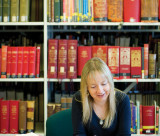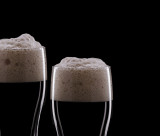
Viva Cuba! The shared passion behind unique archive
June 28th, 2012
In October 1962, US President John F Kennedy delivered an ultimatum to Moscow to remove Soviet-supplied nuclear warheads from the Caribbean island.
For 13 days, “the world held its breath” as the United States blockaded Cuba by land and sea, an act the Soviet Premier Nikita Khrushchev denounced as “an act of aggression propelling humankind into the abyss of a world nuclear-missile war”. In return for JFK’s secret pledge not to invade Cuba and to remove America’s own inter-continental missiles from Italy and Turkey, Khrushchev backed down and removed the missiles from the island.
The Cuban Missile Crisis was the closest the world has come to a nuclear conflict and remains one of the defining moments of the Cold War.
Aligned with the Soviet Union, and less than 100 miles off the Florida Keys of the United States, Cuba was on the frontline in the Cold War throughout the 1960s and beyond. The Cuban Revolution of 1959 had brought to power Fidel Castro, who was fervently opposed to “Yankee imperialism” and looked to Moscow as an economic and political ally.
Throughout the following decade, Castro’s government was to prove a continual source of resentment and suspicion to the US as Cuba sought to foment revolution in South America and central Africa. It was the Argentinian-born Che Guevara who was dispatched from Cuba to bring down capitalism in Latin America, Washington’s own back yard.
In 1967, the guerilla leader was captured and executed by government forces in Bolivia. By then he was known as simply Che, and became the pin-up boy of 60s and 70s radicals the world over. To Antoni Kapcia, such iconic figures and epoch-defining moments being played out in Cuba and Latin America must have seemed a world away from the dreary toil of an insurance office.
“It was 1967 and I was working in insurance and getting bored out of my mind and things were starting to heat up in Latin America,” he recalls.
He went on to do Modern Iberian and Latin American Regional Studies at UCL. What started as an interest has grown into a passion – a passion he has built his professional life around. Professor Antoni Kapcia has now been to Cuba more than 40 times and is Director of the Centre for Research on Cuba, whose conference in September 2012 will undoubtedly include some reconsideration of the Missile Crisis 50 years on.
The Centre brings together researchers working from the Department of Spanish, Portuguese and Latin American Studies, institutions across Europe and the University of Havana. Its unique attraction is crammed into a tiny room housed in Florence Boot Hall: the Hennessy Collection.
Prof Kapcia said: “It’s a unique archive of Cuba and its history. It’s the biggest collection in the UK, the biggest in terms of the spread of materials. The British Library has a large collection but they don’t have the sheer spread that we have.”
The collection owes its roots to a friendship struck up by Prof Kapcia with a former colleague, Alistair Hennessy, when they were both working in Warwick University. When Hennessy retired in 1994, he bequeathed the collection to Prof Kapcia. When he came to Nottingham in 2003, the collection came with him.
The room in Florence Boot Hall has floor-to-ceiling shelves, with every bit of available space filled with newspapers, books, video tapes, magazines, posters, comics, journals and leaflets. It’s hard to imagine how much longer the collection can be housed there if it continues to grow.
“The growth of the collection has far exceeded our expectations, especially over the last eight years,” said Prof Kapcia. “We also have several things that are quite valuable, including 19th-century books.”
“There are some gaps, for example, in the early 90s, the economy [in Cuba] suffered when the Soviet Union collapsed. By that time, people from the Foreign Office were also no longer bringing stuff back to the UK, or having subscriptions to Cuban newspapers as a matter of course. It all got very chaotic. I doubt Cuba has some of the stuff that was printed then itself. There’s no collection that is more valuable than ours.
“The US has lots of Cuban specialists but they can’t visit the country as easily as we can; that gives us a huge advantage. What makes it unique is the combination of resources, the scale of the collection and the access we offer. People contact us fro Germany, France, Spain, as well as from across Britain. If you want to study Cuba at a postgraduate level, you need to tap into the Hennessy Collection.”
So, did the young restless Tony have the standard-issue poster of political icon Che Guevara on his bedroom wall? “Me? No! I had a poster of Jean Shrimpton!”
The Centre also organises the Cuba Research Forum annual conference. The Forum is an international discussion group which initiates collaboration, academic exchange and conferences on a regular basis. The annual conference, now in its 15th year, runs from Tuesday 11 to Thursday 13 September, hosted by the Centre for Research on Cuba.
Comments are closed.
Other Features

Baptism of fire for WW1 curator
Stories from the First World War are being revealed for the first time at a University […]


